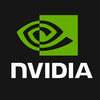Traditional X-ray methods have proven inadequate for differentiating the ink from the burnt papyrus. To address this, Dr. Brent Seales and his research team in 2019 augmented X-ray imaging with a particle accelerator to probe two of the scrolls. Following this, machine learning algorithms were applied to the scanned images in an effort to enhance the visibility of the ink.
An undergraduate student at the University of Nebraska-Lincoln, Luke Farritor, implemented a machine-learning model on his Nvidia GeForce GTX 1070 graphics processing unit. The model was designed to detect specific "crackle patterns" indicative of the presence of ink, despite the damaged state of the papyrus. Through extensive training, this AI model successfully recognized the Greek word πορφυρας, which translates to "purple" in various contexts. Farritor's contribution was acknowledged with a monetary prize of $40,000 from the Vesuvius Challenge, which incentivizes the deciphering of text from the scrolls.
The scrolls originate from the Villa of the Papyri, uncovered in the archaeological excavations of Herculaneum that began in 1738 and gained momentum under King Charles VII of Naples in 1750. The Villa, which may have belonged to Lucius Calpurnius Piso Caesoninus, is celebrated for its cultural artifacts including sculptures, frescoes, and the bust of Scipio Africanus. These discoveries underscore the Villa's importance to historical studies and the broader narrative of ancient Rome.



